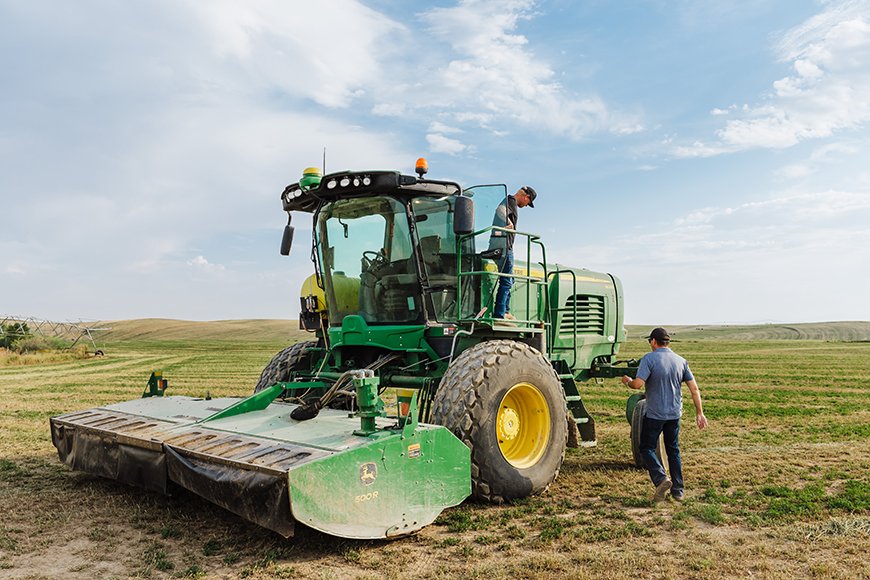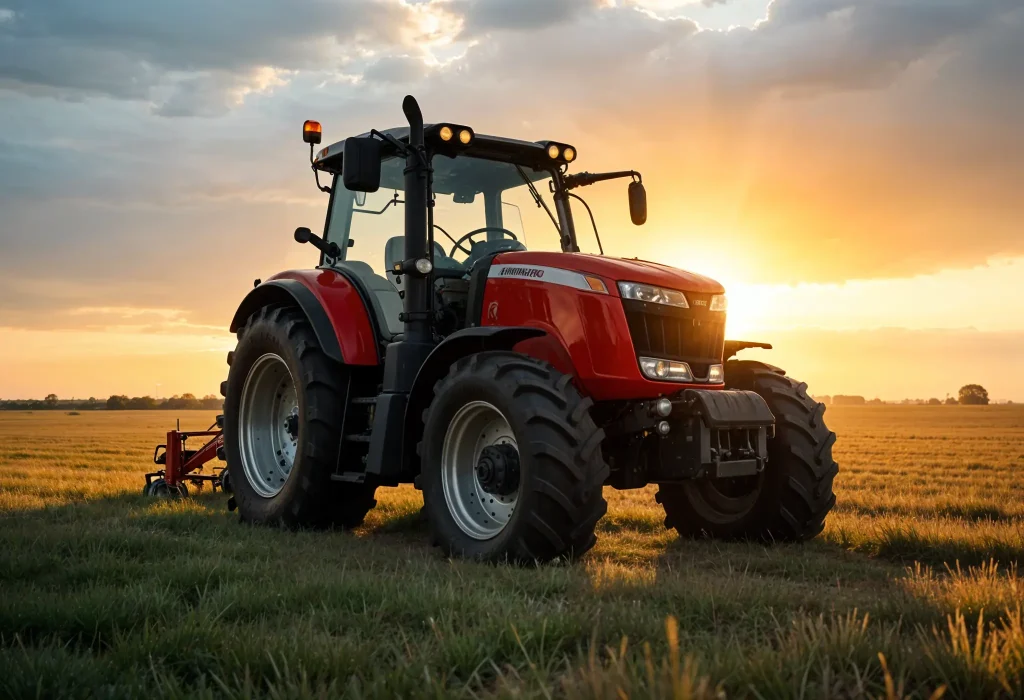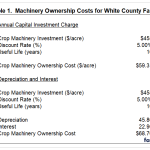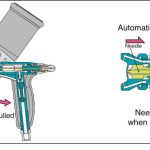Imagine waking up to the crisp morning air during harvest season, knowing that everything is in perfect order. Your equipment is ready, your team is prepared, and you can focus entirely on gathering the fruits of your labor.
Does that sound like a dream scenario? It doesn’t have to be. With a well-planned maintenance schedule, you can ensure that your harvest runs smoothly and efficiently. We’ll guide you through creating a maintenance schedule that minimizes downtime and maximizes productivity.
You’ll discover practical tips and tricks to keep everything from your tractors to your tools in top shape. So, if you’re ready to make this harvest season your best one yet, keep reading. The secret to a stress-free and successful harvest is just a few steps away.

Equipment Inspection
Harvest season demands efficient machinery. Regular equipment inspections are crucial. They prevent costly breakdowns and ensure smooth operations. This process involves checking every part thoroughly. It guarantees that machines work at their best. Let’s explore essential aspects of equipment inspection.
Visual Checks
Start with a visual inspection. Look for obvious signs of wear. Check for broken parts, rust, and leaks. This step helps identify visible problems quickly. It saves time during further checks. Visual checks are the first line of defense.
Lubrication Points
Lubrication is vital for machinery health. Inspect all lubrication points carefully. Ensure they are clean and functioning. Proper lubrication reduces friction. It extends the lifespan of moving parts. Keep lubrication schedules up-to-date.
Electrical Systems
Check electrical systems thoroughly. Look at wires, connections, and fuses. Ensure everything is secure and working. Faulty electrical systems can halt operations. Regular checks prevent unexpected failures.
Fluid Levels
Machines rely on fluids to operate smoothly. Inspect oil, fuel, and hydraulic fluid levels. Make sure they are at optimal levels. Low fluid levels can damage machinery. Consistent checks prevent this issue.
Belt And Chain Tension
Inspect belts and chains regularly. Check tension and alignment. Loose belts can affect performance. Proper tension ensures efficient operation. Adjust as needed to maintain productivity.
Safety Features
Safety features are essential. Inspect guards, shields, and emergency stops. Ensure they are working correctly. Safety features protect workers from harm. Regular checks keep everyone safe.
Documentation
Record all inspection findings. Document repairs and replacements made. Keep records organized and accessible. Documentation helps track maintenance history. It assists in future inspections.

Tool Calibration
Tool calibration is critical during harvest season. Proper calibration ensures efficient equipment performance. It minimizes wastage and maximizes yield. Regular calibration prevents mechanical failures. A well-calibrated tool saves time and resources. It supports a smooth and productive harvest.
What Is Tool Calibration?
Tool calibration involves adjusting equipment settings. This ensures accuracy and precision. Each tool has specific calibration requirements. These depend on the type and model. Calibration aligns tools with their intended functions. It guarantees optimal performance during use.
Why Is Calibration Important?
Calibration improves tool efficiency. It ensures equipment operates at peak performance. Poor calibration leads to errors. These can damage crops or equipment. Accurate tools enhance harvest quality. They ensure consistent results across fields.
How Often Should Tools Be Calibrated?
Calibration frequency depends on tool usage. High-usage tools need frequent checks. Check before each major harvest. Environmental factors also affect calibration. Humidity and temperature can impact tool settings. Regular checks ensure ongoing accuracy.
Steps For Effective Tool Calibration
First, gather necessary calibration tools. Next, consult the equipment manual. Follow specific calibration instructions. Adjust settings as needed. Test the tool on a small area. Verify accuracy before proceeding with full harvest.
Common Calibration Tools
Calibration tools vary by equipment type. Common tools include calibration weights and measuring tapes. Digital tools offer precise measurements. Use recommended tools for best results. Ensure tools are in good condition. This guarantees accurate calibration.
Storage Preparation
Creating a maintenance schedule for harvest season ensures equipment stays reliable. Regular checks prevent breakdowns and save time. Proper storage preparation protects the harvest and maintains quality.
Preparing for harvest season demands meticulous planning, especially regarding storage. Efficient storage preparation is crucial to maintaining the quality of your crops. This section will guide you through the essential steps to ensure your storage facilities are ready for the bounty of the season.Inspect Your Storage Facilities
First, take a close look at your existing storage facilities. Check for any structural damages like cracks, leaks, or signs of pests. Even minor issues can escalate during the storage period, risking the spoilage of your harvest. Ensure that your storage areas are clean and sanitized. Remove any debris or leftover produce from previous seasons. This helps in preventing contamination and ensuring a fresh start for your new yield.Optimize Temperature And Humidity
Temperature and humidity control are vital in preserving the freshness of your crops. Install reliable thermometers and hygrometers to monitor these factors. Make sure your systems are calibrated and functioning well. Consider the specific needs of your crops. Some require cooler temperatures, while others may thrive in slightly warmer conditions. Adjust your settings accordingly to maximize the shelf life of your harvest.Organize Your Storage Space
Think about how you will arrange your crops in the storage area. Group similar items together to make tracking and retrieval easier. Label your containers clearly to avoid any mix-ups. Are you using the right containers for storage? Ensure they are durable and appropriate for the type of produce you plan to store. This simple step can prevent many headaches down the road.Implement Pest Control Measures
Pests can be a nightmare for stored produce. Implement effective pest control measures before storing your crops. This might include sealing entry points, setting traps, or using natural deterrents. Regularly inspect your storage areas for signs of pest activity. Early detection can save your harvest from significant damage. Are you prepared with a plan if pests are detected during storage?Plan For Unexpected Events
Storage preparation isn’t just about the physical space. Consider what you would do in the event of power outages or equipment failures. Backup generators or alternative storage options might be worth considering. Take a moment to review your insurance coverage. Ensure it protects against potential risks associated with storage. Being prepared can provide peace of mind as you focus on other aspects of the harvest. By focusing on these critical elements, you can ensure your storage preparation is robust and ready for the harvest season. Are there any other steps you might add to your checklist?Worker Training
Proper worker training ensures a smooth harvest season. A clear maintenance schedule prevents equipment breakdowns. Regular checks boost efficiency and safety during peak times.
Training your workers for the harvest season is a crucial part of the maintenance schedule. Effective training ensures that workers know how to operate machinery safely, handle produce efficiently, and identify issues before they become problems. Proper training can significantly enhance productivity and safety, making the harvest season smoother and more successful.Understanding The Importance Of Training
Training isn’t just a formality; it’s a necessity. When workers understand the machinery, they can operate it without causing damage. This knowledge reduces downtime and increases efficiency. Imagine the confidence your team will have when they can tackle minor issues themselves.Developing A Comprehensive Training Program
A thorough training program should cover all necessary topics. Create a checklist of skills and knowledge areas. Include safety protocols, machine operation, and emergency procedures. Make sure everyone is on the same page to avoid confusion and accidents.Utilizing Experienced Workers
Experienced workers are invaluable during training. They can share real-world insights that are often missing from manuals. Encourage them to mentor newer workers and share their experiences. This approach builds a culture of learning and collaboration.Practical Hands-on Training Sessions
Theory is important, but nothing beats hands-on experience. Organize training sessions where workers can practice with the actual equipment. These sessions build familiarity and confidence. Plus, they’re a great way to identify potential challenges before the harvest begins.Regularly Updating Training Materials
Agricultural technology and methods evolve. Keep your training materials updated to reflect the latest practices. Schedule periodic reviews of your training content. This ensures that your team is always prepared for any new developments.Encouraging Questions And Feedback
Create an environment where workers feel comfortable asking questions. Questions can highlight areas that need more focus. Feedback from your team can also help improve training materials and methods, making them more effective for everyone involved.Training isn’t just about imparting knowledge; it’s about empowering your workers. By investing in a comprehensive training program, you set the stage for a successful harvest. How will you ensure your team is ready for the challenges of the season?

Conclusion
Regular maintenance ensures a smooth harvest season. Stick to the schedule. Inspect equipment often. Clean tools after each use. Sharpen blades for efficient cutting. Check machine oil levels routinely. Replace worn-out parts promptly. Keep storage areas tidy. Monitor crop health continuously.
Address issues early. Save time and money. Protect your investments. Boost productivity. Healthy crops, healthy profits. Maintain your equipment well. Your harvest depends on it. Plan ahead. Stay organized. Prepare for unexpected challenges. A little effort goes a long way.
Secure a fruitful harvest. Happy harvesting!



